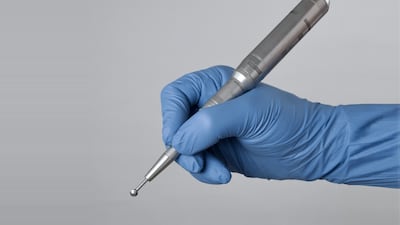The carotid arteries are large vessels on either side of the neck whose primary function is to supply oxygen-rich blood to the brain. Like the coronary arteries that nourish the heart, these vessels can become clogged over time with deposits of atherosclerotic plaque, impeding the flow of blood to the brain. If the carotids are severely restricted or the occluding lesions throw off clots or other embolic particles that can block smaller vessels in the brain, the end result is often a stroke—a scenario that is all too common. Over 700,000 strokes occur each year in the U.S., the majority caused by some type of blood vessel obstruction that deprives the brain of sufficient oxygen. Researchers estimate that carotid artery disease is the causative factor in up to 30% of these ischemic strokes (nearly 200,000 per year)—and as many as 1.5 million Americans with carotid artery disease may be at risk.
The gold standard treatment for patients with significant carotid blockages (stenoses of >70%) who are at risk for stroke is carotid endarterectomy (CEA), a surgical procedure that requires a large...
Read the full article – start your free trial today!
Join thousands of industry professionals who rely on Medtech Insight for daily insights
- Start your 7-day free trial
- Explore trusted news, analysis, and insights
- Access comprehensive global coverage
- Enjoy instant access – no credit card required
Already a subscriber?







